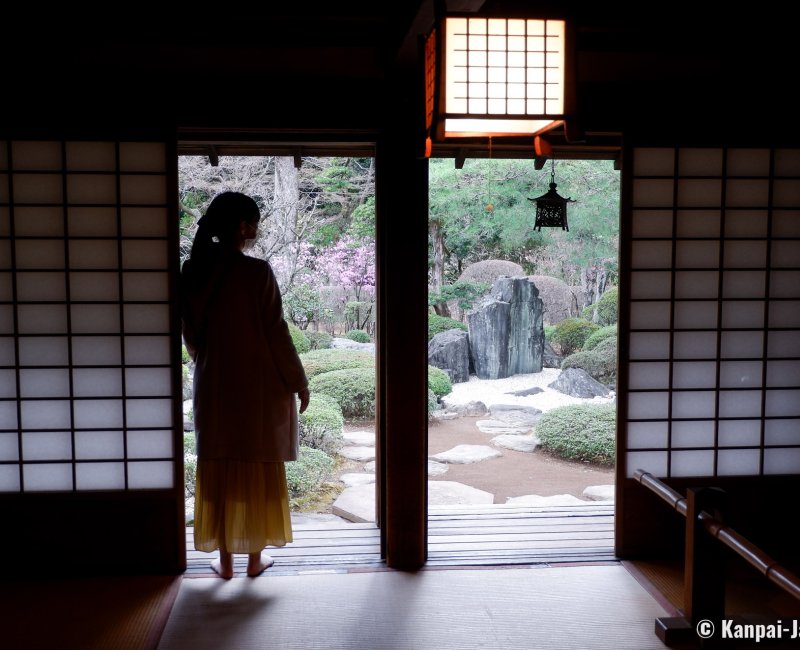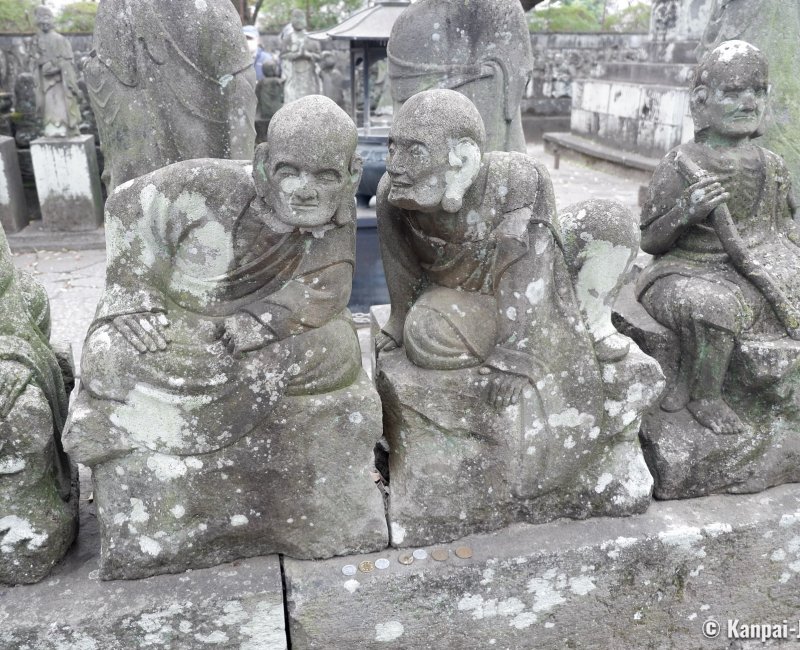Kita-in
The Remains of Edo Castle in Kawagoe
Kita-in is a Buddhist temple of the Tendai school located in Kawagoe in Saitama prefecture in Japan. Closely related to the Tokugawa Clan since the Edo period (1603 – 1868), it is home to the last remains of the former Edo Castle as well as to 538 fascinating Rakan statues.
Kita-in was founded in 830 by monk Ennin (794 – 864) as a temple of the Tendai sect and worships 3 prominent figures of Japanese Buddhism:
- Amida Nyorai, the Pure Land Buddha;
- Fudo Myoo, one of the 5 Wisdom Kings;
- Bishamonten, one of the 4 Heavenly Kings and Shi-Tenno guardian of the north.
Temple rebuild using Edo Castle’s pavilions
The temple’s influence grew thanks to the support of notable figures. First protected by emperors Go-Fushimi (1288 - 1336) then Go-Nara (1495 – 1557), it was administered by monk Tenkai (1536 - 1643) who was, in the early 17th century, a reliable collaborator of shogun Tokugawa Ieyasu (1543 - 1616).
Therefore, after most of its buildings were burnt during the great Kanei fire 🔥 in 1639, the reconstruction of the temple, also home to the Senba Toshogu mausoleum, became a priority as per the order of Tokugawa Iemitsu (1604 – 1651). In addition, the shogun made a donation of a few pavilions of Edo Castle 🏯’s Momijiyama area, namely:
- Kyaku-den (客殿), the reception hall, that includes the room where Iemitsu was born;
- Shoin (書院), the study room that used to be Kasuga no Tsubone (1579 – 1643), the shogun’s wet-nurse’s boudoir; and,
- Kuri (庫裏), a pavilion nowadays used as the temple’s administration office.

These authentic buildings are now the last existing remains of the Edo Castle, that was completely destroyed in the beginning of the 20th century. An indoor display shows the every day life of the Tokugawa’s, with a nice collection of historical objects and a view on Iemitsu’s bathroom 🛁. There are also 2 adjacent Japanese gardens, enjoyable in spring, then in autumn 🍁, including a karesansui dry garden.
Additionally, several other remarkable constructions can be found in the temple’s grounds, such as:
- Sanmon (山門), Kita-in’s main gate dating back to 1632 and is in its original condition;
- Jikeido (慈恵堂), a large pavilion dedicated to monk Ryogen (912 - 985);
- Jigando (慈眼堂), a small hall dedicated to monk Tenkai;
- Tahoto (多宝塔), a 13-meters high pagoda, characterized by its 1rst level in a quadrilateral shape, and its 2nd in a circular shape; and,
- A mausoleum dedicated to the 5 lords who ruled over Kawagoe between 1767 and 1866.

The adjoining Senba Toshogu (仙波東照宮) and Hie-jinja (日枝神社) shrines are also in the same enclosure, despite being officially separated from the temple since the 1868 Meiji Restoration.
Fun fact, the Konponchu-do pavilion standing nowadays in the north of Tokyo’s Ueno Park, initially belonged to the Kita-in. It was donated to the Kan'ei-ji, the Tokugawa’s main temple during the Edo period, after the later was destroyed in the Ueno Battle (July 1868) during the Boshin War (1868 - 1869).
The 538 expressive faces of the Rakan statues
Behind the temple’s main buildings, a small, barely noticeable doorway opens on a protected space dedicated to the "500 arhats", Buddha’s disciples who have reached enlightenment according to Japan’s Buddhist lore.
Named Gohyaku Rakan in Japanese, the 538 statues representing the beings who reached wisdom are gathered on the site of Kita-in. They were sculpted in stone between 1782 and 1825, and each of them displays a different face, so detailed that they seem to be alive.

Kita-in is enjoyable for its blooming cherry trees 🌸 but is popular throughout the year. Located only a few minutes’ walk away from the Kurazukuri no Machinami traditional warehouses district, it offers a good complement to a stroll in Kawagoe’s historical city center.


